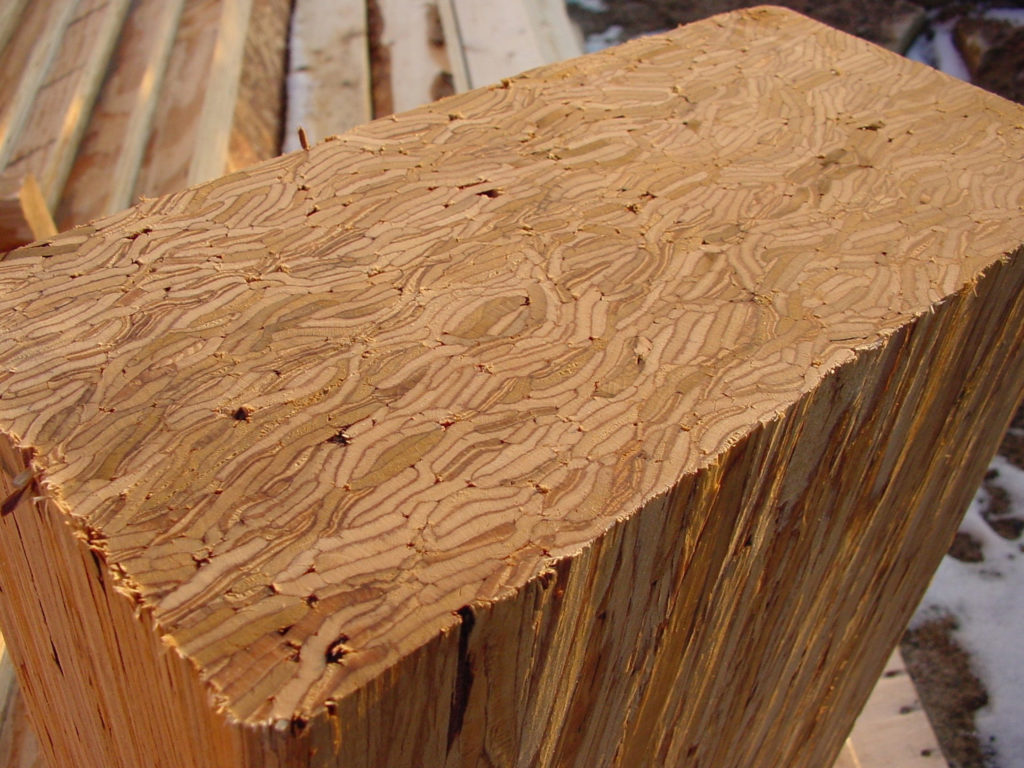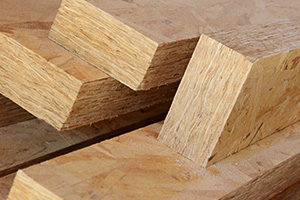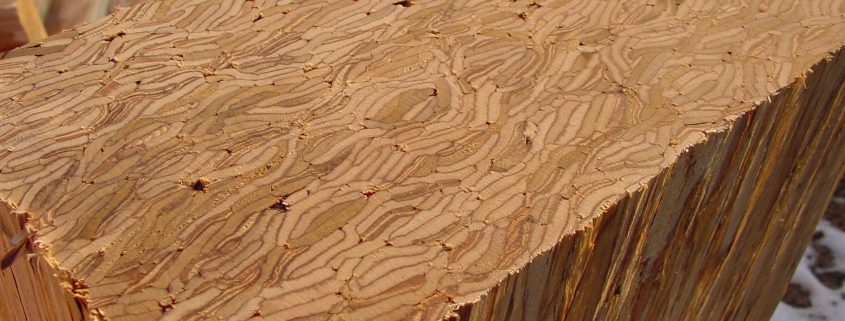Structural Composite Lumber
 Structural composite lumber has become increasingly popular in building construction. This is due to the product’s strength, reliability, availability, and consistency as compared to conventional wood members.
Structural composite lumber has become increasingly popular in building construction. This is due to the product’s strength, reliability, availability, and consistency as compared to conventional wood members.
We use structural composite lumber where we need high strength; where there are large openings such as those for patio and garage doors; and in remodeling projects where we are removing a bearing wall and need to support the load above. We use SCL primarily because of the following:
- It’s about 3 times stronger than regular lumber.
- It can be made in longer lengths – lengths are not limited by the size of the tree.
- It’s dimensionally stable so it doesn’t shrink.
How is SCL Made?
Structural composite lumber (SCL) includes a variety of wood products which are engineered for use in construction projects.
SCL products are created using dried and graded wood veneers, strands or flakes. The selected wood materials are layered with adhesives and then cured in a heated press to create blocks. These blocks or billets are sawn to create the sizes that are needed for the individual project.
What are the Advantages of SCL?
- SCL is a solid, predictable, and uniform wood product that can be used in place of traditional lumber.
- SCL products can carry higher loads as compared to a similar size conventional lumber member.
- It performs better and more consistently than conventional lumber, with very little warping or splitting of the material.
- SCL can be sawn to the desired size and the process can be easily repeated for consistent size wood members.
- SCL uses wood products such as wood chips that would otherwise end up in the waste stream.
How is it used?
SCL is used in a variety of applications and forms:
Joists
studs
columns
rafters
headers
beams
I-joist flanges
Although the end product is typically 3/4″ to 3-1/2″ thick, sections of the material can also be joined together as needed. These thicker members are often used as headers or columns.
What are the types of structural composite lumber?
SCL is used in residential and commercial applications for floors, walls, and roofs. The APA Engineered Wood Construction Guide provides guidance to designers and builders who are specifying or using these engineered wood materials. Manufacturers of SCL include Boise Cascade Company and Georgia-Pacific Wood Products LLC.
Laminated Veneer Lumber (LVL)
 thin wood veneers are layered together in a large billet
thin wood veneers are layered together in a large billet- the grain of all veneers is parallel in the long direction
- the billet is sawn to the desired dimensions
- available in lengths that exceed that available in conventional lumber
Parallel Strand Lumber (PSL)
 wood veneers are clipped into long strands laid in parallel formation
wood veneers are clipped into long strands laid in parallel formation- length to thickness ratio of 300
- strands are bonded together with an adhesive
- used when high bending strength is desired, such as headers and beams
- used as load-bearing columns
Laminated Strand Lumber (LSL)
 made from flaked wood strands that have a length-to-thickness ratio of 150
made from flaked wood strands that have a length-to-thickness ratio of 150- strands are oriented and formed into a large billet, combined with adhesive, and pressed
- used in a variety of applications including studs and millwork
Oriented Strand Lumber (OSL)
 made from flaked wood strands with a length-to-thickness ratio of 75
made from flaked wood strands with a length-to-thickness ratio of 75- combined with adhesive, the strands are oriented and formed into a large billet and pressed
- used in a variety of applications including studs and millwork
We like to specify structural composite lumber for our projects. It has become increasingly popular in building construction as compared to regular lumber because of its strength, reliability, consistency, and availability.
Photo credit: APA – The Engineered Wood Association. www.apawood.org



